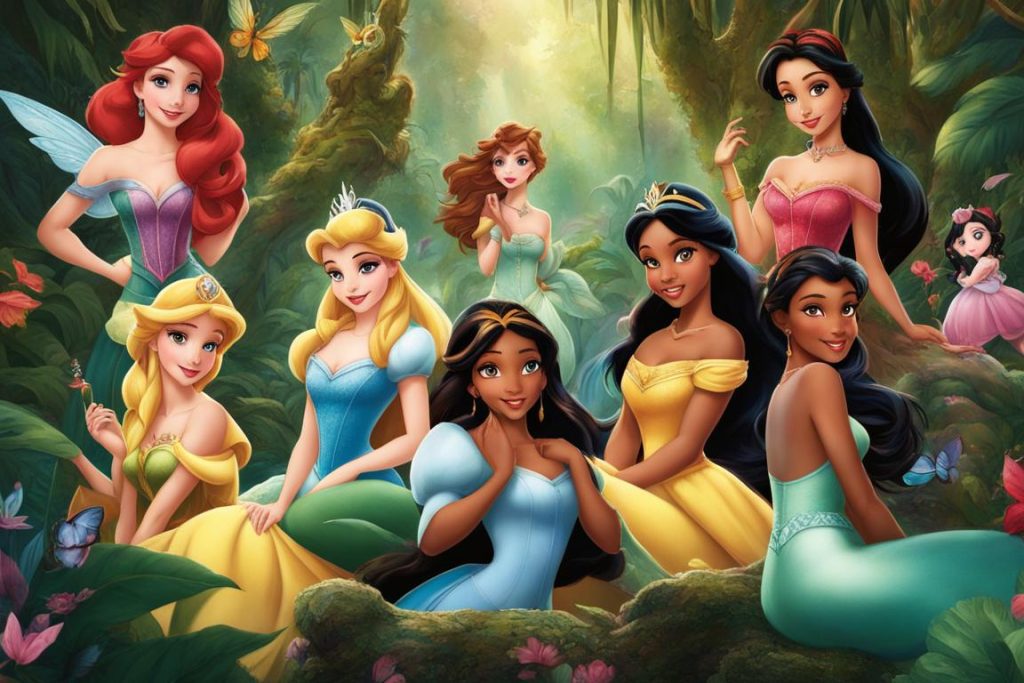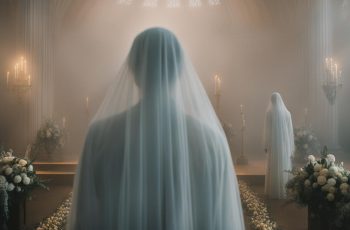People with big eyes have long captivated us with their allure. From animated princesses with oversized eyes to celebrities like Angelina Jolie and Taylor Swift, there’s something about large eyes that draws us in. But what is it that makes people with big eyes so captivating? Let’s dive into the science behind this fascination and explore the various factors that contribute to the appeal of big eyes.
People with Big Eyes
- People with big eyes have a unique allure that captivates us on multiple levels.
- Big eyes are associated with beauty and attractiveness in various cultures.
- Evolutionary psychology suggests that big eyes activate care-taking responses and are associated with youthfulness.
- The media plays a significant role in shaping our perception of big eyes and beauty standards.
- Astrology, specifically the study of Nakshatras, provides insights into the meaning and influence of big eyes.
The Impact of Media on Our Perception of Big Eyes
The media has an undeniable influence on our perception of beauty, and this includes the portrayal of big eyes. In particular, Disney movies have played a significant role in shaping our understanding of big eyes and their appeal. Animated princesses, such as Cinderella, Snow White, and Ariel, often have exaggeratedly large eyes that conform to cultural beauty standards of idealized features.
These big-eyed princesses create an air of innocence and vulnerability, making them more relatable and endearing to viewers. As a result, we have come to associate big eyes with these qualities, which further enhances their appeal. The media’s portrayal of big eyes as attractive and desirable has influenced our perception of beauty and has a lasting impact on our preferences.
One study conducted by Vision Research suggests that adults with “babyfacedness” characteristics, such as enlarged eyes, are seen as less smart but more congenial. This study reinforces the idea that big eyes are associated with innocence and vulnerability, traits that are often portrayed in the media.
“Animated princesses often have exaggeratedly large eyes, which conform to cultural beauty standards of idealized features. This aesthetic choice creates an air of innocence and vulnerability, making the characters more relatable and endearing to viewers.”
Disney Princesses and their Big Eyes
| Princess | Movie | Eye Size |
|---|---|---|
| Snow White | Snow White and the Seven Dwarfs | Large |
| Ariel | The Little Mermaid | Big |
| Cinderella | Cinderella | Large |
| Rapunzel | Tangled | Enormous |
The table above showcases some of the most iconic Disney princesses and their big eyes. This visual representation reinforces the prevalence of this characteristic within the Disney princess franchise. It also underscores the impact of media on our perception of big eyes and their association with innocence and vulnerability.
In conclusion, the media, particularly through Disney movies, has played a significant role in shaping our perception of big eyes. The portrayal of big-eyed princesses as attractive and relatable has influenced our understanding of beauty and has contributed to the fascination with big eyes in society.
The Evolutionary Significance of Big Eyes
When it comes to mate selection and facial attractiveness, evolutionary psychology sheds light on the significance of big eyes. Throughout history, men have shown a preference for women with large eyes, as these features resemble baby-like facial characteristics. This neotenous quality triggers innate care-taking responses in humans, leading to positive evaluations and a natural attraction towards individuals with big, wide eyes.
According to evolutionary psychologists, the preference for neotenous features, such as big eyes, may have its roots in our innate desire to protect and care for infants. The innocent and vulnerable appearance associated with large eyes reflects youthfulness and triggers a sense of warmth and affection in others. This deep-rooted attraction contributes to the universal appeal of people with big eyes, making them captivating and alluring.
Facial Attractiveness and Neotenous Features
Multiple studies have shown a correlation between facial attractiveness and neotenous features, including big eyes. Research suggests that individuals with baby-like facial characteristics are perceived as more congenial and approachable, despite being viewed as less intelligent. This phenomenon highlights the power of neotenous features in shaping our perceptions of attractiveness.
| Facial Feature | Perceived Trait |
|---|---|
| Big Eyes | Approachability |
| Neotenous Characteristics | Warmth and innocence |
| Intelligence | Perceived as less intelligent |
These findings highlight the complex interplay between physical traits and social perception. While big eyes may enhance attractiveness, they may also influence social judgments, demonstrating the profound impact of evolutionary psychology on our perception of beauty.
Face Reading and the Meaning of Big Eyes
Face reading, also known as physiognomy, is an ancient practice that believes facial features reveal insights into a person’s personality traits, life goals, and even hidden talents. When it comes to people with big eyes, their facial feature holds significant meaning and symbolism.
In the realm of face reading, individuals with big eyes are often associated with certain personality traits. They are seen as cheerful and open-minded individuals with a vibrant imagination and a passion for learning. Big-eyed people are believed to possess qualities such as intelligence, self-reliance, artistic sensibility, and a strong sense of rhythm. These characteristics contribute to their overall appeal and charm.
Face reading experts can interpret the size, shape, and other characteristics of big eyes to gain insights into a person’s nature, character, and life goals. It is a fascinating practice that provides a deeper understanding of individuals and their unique qualities.
Furthermore, face reading explores the connection between facial features and their meaning in relation to a person’s life journey. For individuals with big eyes, their eye shape and features can offer insights into their career path, relationships, and personal fulfillment. By examining the size and shape of the eyes, face readers can provide predictive insights into various aspects of a person’s life.
Face reading, with its emphasis on interpreting facial features, is a fascinating tool that allows us to delve deeper into understanding ourselves and others. It provides valuable insights into personality traits, life goals, and potential paths for growth and self-discovery. The significance of big eyes in face reading highlights the beauty and complexity of human nature, inviting us to explore the rich tapestry of our individual stories.
Solar Storms and Human Consciousness
Solar storms, characterized by sudden outbursts of energy from the sun, have a profound impact on human consciousness. These cosmic disturbances release a massive amount of radiation and charged particles, disrupting Earth’s magnetic field and creating electromagnetic disturbances. The effects of solar storms on human consciousness are still being studied, but evidence suggests a correlation between these celestial influences and changes in mood, behavior, and even spiritual experiences.
During a solar storm, the influx of energy and disturbance of Earth’s magnetic field can result in various effects on human consciousness. Some individuals report feeling more emotionally charged or physically fatigued during these periods. Others may experience heightened psychic abilities or a deeper connection to the spiritual realm. It is believed that the electromagnetic disturbances caused by solar storms can influence the electromagnetic fields within our bodies, potentially impacting our brain waves and altering our state of consciousness.
“Solar storms can disrupt the electromagnetic balance of our planet, which in turn can affect the electromagnetic field of our bodies. This can lead to changes in our thoughts, emotions, and energetic vibrations.”
While the precise mechanisms behind the interaction between solar storms and human consciousness are not yet fully understood, there is a growing recognition of the influence that celestial phenomena have on our inner states. Exploring the connection between solar storms and our consciousness opens up new avenues of research and invites us to contemplate the intricate relationship between the cosmos and our individual experiences.
| Impact of Solar Storms on Human Consciousness | Effects |
|---|---|
| 1. Mood and Emotions | Changes in emotional states, heightened sensitivity, or increased emotional intensity. |
| 2. Energy Levels | Physical fatigue, increased or decreased energy levels, changes in sleep patterns. |
| 3. Spiritual Experiences | Heightened psychic abilities, deeper spiritual connections, and expanded consciousness. |
The Desire for Fuller Lips and the Attractiveness of Big Eyes
The desire for fuller lips, like that of big eyes, can be attributed to evolutionary psychology and the appeal of neotenous features. Men tend to find women with big eyes, small noses, and full lips more attractive. These features remind us of babies and evoke positive care-taking responses. Fuller lips are associated with youth and fertility, making them appealing to both men and women. The connection between big eyes and attractive facial features extends beyond the eyes themselves, creating a harmonious balance that enhances overall attractiveness.
Evolutionary psychology suggests that our attraction to neotenous features, such as big eyes and full lips, is rooted in our innate desire to protect and care for infants. These features resemble youthful characteristics associated with innocence and vulnerability, triggering positive evaluations and a sense of warmth towards individuals possessing them. The desire for fuller lips aligns with our evolutionary preference for features that signify youth and fertility.
In modern society, the desire for fuller lips has been popularized by celebrities and media influencers. The media plays a significant role in shaping beauty standards, and the obsession with fuller lips can be seen in trends such as lip-plumping treatments and the use of fillers. The association between big eyes and attractive facial features extends to the lips, as full lips are perceived as youthful and desirable.

“The association between big eyes and attractive facial features extends to the lips, as full lips are perceived as youthful and desirable.”
Through the power of social media and celebrity culture, the media perpetuates the beauty standard of fuller lips, creating a desire for this particular aesthetic. It is important to recognize that beauty standards are subjective and can vary across cultures and individuals. However, the media’s influence on lip beauty standards is undeniable, as it shapes our perceptions and influences the choices individuals make to achieve the desired look.
The Impact of Kardashian/Jenner Influence
The Kardashian/Jenner family’s influence on lip beauty standards cannot be overstated. As prominent figures in the media, their lip aesthetics have raised the bar for what is considered attractive and desirable. With their large social media following and widespread influence, the Kardashian/Jenner sisters have propelled lip-plumping treatments and fillers into the mainstream, making them more accessible and socially accepted.
This influence has brought about a cultural shift in the perception of lip aesthetics, with increased emphasis on fullness and plumpness. The media’s portrayal of these enhanced lips as a symbol of beauty and desirability has created a demand for procedures and products that can help individuals achieve this standard.
| Beauty Standard | Description |
|---|---|
| Fuller lips | Emphasis on plumpness and volume |
| Natural-looking | Enhancements that appear subtle and enhance the individual’s features |
| Youthful | Lips that evoke a sense of youth and vitality |
The table above highlights some of the key beauty standards associated with lip aesthetics, influenced by the media’s portrayal of fuller lips. It is important to note that these beauty standards are fluid and subject to change over time, as societal preferences evolve.
The Power of Nakshatras in Astrology
Astrology has long been a source of fascination and guidance for many individuals seeking to understand themselves and their place in the cosmos. One particular aspect of astrology that holds immense significance is the study of Nakshatras. These celestial identities, rooted in Vedic Astrology, provide profound insights into our personality traits and various aspects of our lives.
Through the power of Nakshatras, astrologers can gain predictive insights into our fortunes, health conditions, and significant life milestones. By delving into the study of our celestial identity, we can unlock a deeper understanding of our strengths, weaknesses, and potential life directions.
Nakshatra Meanings and Their Influence
| Nakshatra | Meaning | Influence |
|---|---|---|
| Ashwini | Horsewoman | Initiative, energy, and a pioneering spirit |
| Bharani | Bearer of Good Fortune | Material abundance and success |
| Krittika | Cutter or Creator | Leadership qualities and a creative mindset |
These are just a few examples of the Nakshatra meanings and their influences. Each Nakshatra carries its own unique qualities and can provide invaluable guidance in shaping our lives.
Decoding the Meaning of Nakshatras
When it comes to Vedic Astrology, Nakshatras hold profound meaning and insight into various aspects of our lives. These lunar mansions are closely examined by astrologers to predict fortune, career, health conditions, love life, marriage, and compatibility patterns. By analyzing facial features and interpreting the influence of Nakshatras, astrologers are able to provide valuable insights into our destiny.
In understanding the meaning of Nakshatras, facial features play a significant role. Each Nakshatra is associated with specific characteristics that shape our personality and life experiences. For example, individuals born under the Bharani Nakshatra are believed to possess a strong determination and a desire for wealth, while those born under the Rohini Nakshatra are known for their nurturing qualities and artistic inclinations.
The influence of Nakshatras extends beyond personal traits and can shed light on other important aspects of life. Whether it’s career, family, or love, the study of Nakshatras provides insights into the energies that shape our experiences and relationships. Understanding our Nakshatra can help us navigate life’s challenges and make informed decisions that align with our cosmic destiny.
| Nakshatra | Meaning | Associated Traits |
|---|---|---|
| Ashwini | Horsewoman | Energetic, ambitious, adventurous |
| Bharani | Bearer of Good Fortunes | Determined, hardworking, driven |
| Rohini | The Red One | Nurturing, artistic, sensual |
| Krittika | The Cutter | Independent, sharp-witted, courageous |
As we delve deeper into the fascinating world of Nakshatras, we begin to unravel the intricate connections between celestial influences and our own lives. The study of facial features and the interpretation of Nakshatras offer us a glimpse into our destiny, allowing us to navigate life’s journey with a deeper understanding of ourselves and the universe around us.
The Influence of Disney and Evolutionary Psychology on Princesses’ Appearance
The appearance of Disney princesses reflects both the influence of evolutionary psychology and cultural beauty ideals. In animated films, Disney princesses are often portrayed with exaggerated features, including large eyes, small chins, and short noses. These features embody neotenous characteristics associated with youth, innocence, and vulnerability. As a result, princesses with big eyes elicit care-taking responses and appeal to our innate desire to protect and nurture.
The portrayal of princesses with big eyes in Disney movies aligns with both evolutionary psychology theories and society’s perception of beauty. Evolutionary psychology suggests that neotenous features are attractive because they resemble characteristics of infants, triggering positive evaluations and a sense of warmth. Additionally, cultural beauty ideals tend to favor youthful and innocent appearances, further enhancing the appeal of big-eyed princesses.
The influence of Disney and evolutionary psychology on princesses’ appearance extends beyond the films themselves. These portrayals have a significant impact on societal beauty standards and the way we perceive attractiveness. The images of big-eyed princesses become ingrained in our minds from a young age, shaping our ideals of beauty and influencing our preferences later in life. By understanding the interplay between Disney’s portrayal of princesses and evolutionary psychology concepts, we gain insights into the enduring fascination with big-eyed characters.

The Evolutionary Significance of Big Eyes
Big eyes have long been associated with mate selection and facial attractiveness from an evolutionary psychology perspective. Men tend to prefer women with large eyes due to their resemblance to baby-like facial characteristics. This neotenous feature activates innate care-taking responses in humans, leading to positive evaluations and an instinctive attraction towards individuals with big, wide eyes. The portrayal of big-eyed princesses in Disney movies taps into this evolutionary preference and further reinforces the appeal of large eyes in popular culture.
The Fascination with Neotenous Features
The allure of people with big eyes goes beyond mere aesthetics. It taps into something deeper – our innate fascination with neotenous features. Neoteny refers to the retention of childlike characteristics into adulthood, and features like large eyes evoke a sense of youthfulness, innocence, and care-taking responses.
When we encounter someone with big eyes, a positive evaluation is triggered within us. It’s as if we’re biologically programmed to respond favorably to these neotenous traits, finding them endearing and attractive. This fascination with big eyes is deeply rooted in our evolutionary history, where traits resembling those of a child signaled vulnerability and elicited protective instincts.
“There is something captivating about the innocence and openness that big eyes convey, drawing us in and creating an instant connection.”
Furthermore, the appeal of neotenous features, such as big eyes, extends beyond their biological significance. In our society, these features are often associated with positive qualities like warmth, kindness, and approachability. People with big eyes are often seen as friendly, open-minded, and cheerful, traits that contribute to their overall charm.
The Universal Appeal
The fascination with neotenous features is not limited to any specific culture or demographic. It transcends borders and resonates with people around the world. Whether through art, media, or personal connections, individuals with big eyes continue to captivate us and inspire a sense of wonder. It’s as if the innocence and carefree spirit encapsulated within those eyes touches a deep part of our hearts, reminding us of the joy and purity of childhood.
| Neotenous Features | Significance |
|---|---|
| Big eyes | Evoke positive evaluations and care-taking responses |
| Youthfulness | Remind us of the innocence and playfulness of childhood |
| Innocence | Create a sense of trust and approachability |
| Care-taking responses | Elicit protective instincts and feelings of warmth |
Our fascination with neotenous features, particularly big eyes, is a testament to the beauty and complexity of human attraction. It’s a reminder of the profound impact that certain physical characteristics can have on our perception of others. So the next time you find yourself captivated by someone with big eyes, embrace the sense of wonder they evoke and appreciate the timeless allure of neoteny.
Conclusion
After delving into the science and cultural influences behind our fascination with people with big eyes, it is clear that their allure extends beyond mere aesthetics. Evolutionary psychology reveals that our attraction to neotenous features, such as big eyes, stems from our innate desire to protect and care for individuals who resemble babies. These features elicit positive evaluations and warmth, creating a natural appeal that transcends cultural boundaries.
Furthermore, media and beauty standards play a significant role in shaping our perception of attractiveness. From Disney princesses with exaggeratedly large eyes to the influence of celebrities, the media reinforces the desirability of big eyes. This cultural impact shapes our ideals and further adds to the attraction we feel towards individuals with prominent eyes.
Astrology, specifically the study of Nakshatras, provides another dimension to the meaning and influence of big eyes in our lives. By understanding the power of Nakshatras, we gain insights into our celestial identity and how it may impact various aspects of our existence, including relationships, career, and fortune.
People with big eyes continue to captivate and fascinate us on multiple levels. Their facial features, influenced by evolutionary psychology, media, and astrology, evoke a natural attraction and a sense of wonder. Whether it’s their perceived innocence, cultural beauty standards, or cosmic connections, big eyes hold a special place in our collective fascination with human beauty.
FAQ
What is it about big eyes that makes people so captivated?
People are captivated by big eyes because they evoke a sense of innocence and vulnerability, making individuals more relatable and endearing. They also activate care-taking responses in humans, triggering positive evaluations and instinctive attraction.
How does the media influence our perception of big eyes?
The media, particularly through Disney movies, has shaped our perception of big eyes. Animated princesses with exaggeratedly large eyes conform to cultural beauty standards and create an air of innocence and vulnerability, making them more relatable and appealing to viewers.
What is the evolutionary significance of big eyes?
Big eyes have long been associated with mate selection and facial attractiveness. Men tend to prefer women with large eyes, as these features resemble baby-like facial characteristics. This neotenous feature activates care-taking responses and leads to an instinctive attraction towards individuals with big, wide eyes.
What can face reading tell us about people with big eyes?
Face reading suggests that people with big eyes are often seen as cheerful, open-minded, and approachable. They tend to be creative individuals with vibrant imaginations and a passion for learning. Big-eyed individuals are also believed to possess qualities such as intelligence, self-reliance, artistic sensibility, and a strong sense of rhythm.
How do solar storms impact human consciousness?
Solar storms, which release a massive amount of energy, can disrupt Earth’s magnetic field and create electromagnetic disturbances. This disruption can affect human consciousness and lead to changes in mood, behavior, and even spiritual experiences. The specific effects of solar storms on human consciousness are still being studied.
Why are fuller lips desirable, similar to big eyes?
Fuller lips, like big eyes, are associated with youth and fertility. Men tend to find women with big eyes, small noses, and full lips more attractive. These features evoke positive care-taking responses and are perceived as youthful and desirable.
How does the media influence lip beauty standards?
The media, along with celebrity culture, has fueled trends such as lip-plumping treatments and the use of fillers to achieve fuller lips. The association between big eyes and attractive facial features extends to the lips, as full lips are perceived as youthful and desirable.
What is the significance of Nakshatras in astrology?
Nakshatras, an integral part of Vedic Astrology, provide insights into our celestial identity. They influence our personality traits and various aspects of our lives, including fortune, health conditions, and significant life milestones.
How can Nakshatras be interpreted through facial features?
Astrologers analyze facial features, along with other factors, to interpret the meaning of Nakshatras. By studying facial characteristics, they can predict various aspects of a person’s life, including career, wealth, love life, marriage, compatibility patterns, and relationship dynamics.
How does Disney and evolutionary psychology influence princesses’ appearance?
Disney princesses’ appearance reflects both the influence of evolutionary psychology and cultural beauty ideals. The exaggerated features, including big eyes, small chins, and short noses, embody neotenous characteristics associated with youth, innocence, and vulnerability.
Why are we fascinated by neotenous features?
Neotenous features, such as big eyes, are associated with youthfulness, innocence, and care-taking responses. These features evoke positive evaluations and a sense of warmth towards individuals possessing these traits. The attraction to neotenous features is deeply rooted in our evolutionary history and contributes to the universal appeal of people with big eyes.
What makes people with big eyes so captivating?
People with big eyes have a unique allure that captivates us. Their facial features, reminiscent of babies, evoke positive care-taking responses and attractiveness. This appeal is rooted in evolutionary psychology, cultural beauty standards, media influence, astrology, and the universal fascination with neotenous features.




